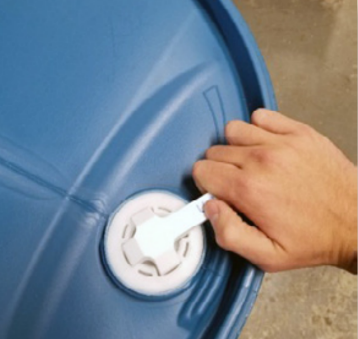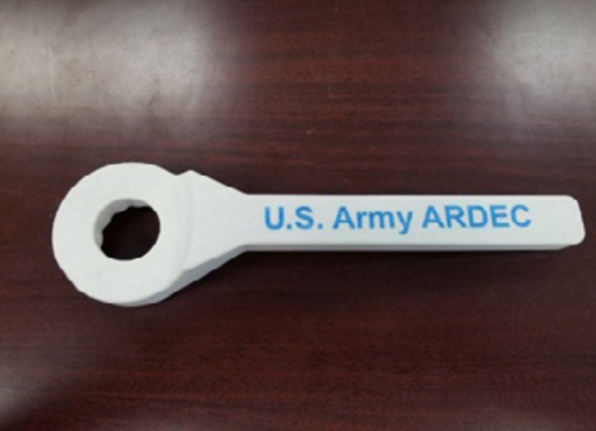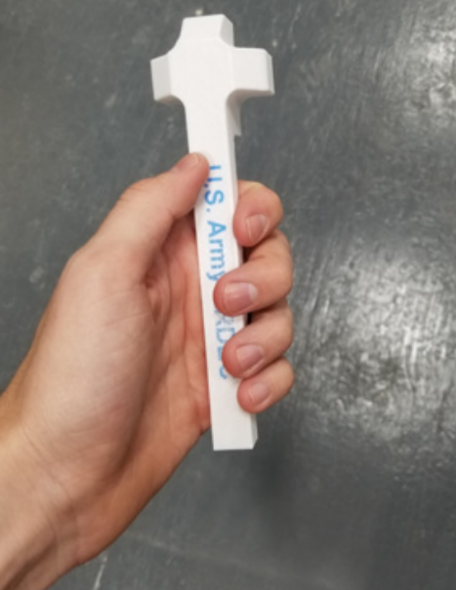 The United States Army Armament Research, Development and Engineering Center (ARDEC) at Picatinny Arsenal in New Jersey serves as the main R&D group for the U.S. Army armament and munitions systems. There, personnel continue to specialize in material property innovation, along with developing advanced technology. It makes perfect sense that they would branch out into additive manufacturing processes and further study of materials that would fit in with needs for the military.
The United States Army Armament Research, Development and Engineering Center (ARDEC) at Picatinny Arsenal in New Jersey serves as the main R&D group for the U.S. Army armament and munitions systems. There, personnel continue to specialize in material property innovation, along with developing advanced technology. It makes perfect sense that they would branch out into additive manufacturing processes and further study of materials that would fit in with needs for the military.
 Currently, ARDEC houses 25 3D printers of varying types. Matthew Brauer, scientist for the Advanced Materials Branch of ARDEC, states that currently they are using everything from compact desktop machines in the $500 range to industrial size additive manufacturing equipment that costs over $500,000. The goal is for such processes to be available to soldiers in the field when they need to make parts right way, either as replacements or for general maintenance.
Currently, ARDEC houses 25 3D printers of varying types. Matthew Brauer, scientist for the Advanced Materials Branch of ARDEC, states that currently they are using everything from compact desktop machines in the $500 range to industrial size additive manufacturing equipment that costs over $500,000. The goal is for such processes to be available to soldiers in the field when they need to make parts right way, either as replacements or for general maintenance.
The hardware has to be reliable, streamlined and user-friendly, as well as safe and durable for what can be rigorous conditions. Any 3D printers used by the military must also comply with performance requirements, along with rigid regulations for storing and disposing of waste materials—and this can vary by country.
The Rize hybrid augmented deposition process offers multiple benefits to not only ARDEC but also the Advanced Materials & Technology Branch within ARDEC. Printing is performed through extrusion of thermoplastics and the jetting of inks.
“It’s easy to peel away supports from intricate geometries, and that provides a faster part in the soldier’s hand,” said Matthew Brauer, Scientist, Advanced Materials Branch of ARDEC.
 James Zunino, Materials Engineer at ARDEC, also adds that less post-processing is highly desirable in areas where there simply isn’t enough water for exercises like post-processing in 3D printing.
James Zunino, Materials Engineer at ARDEC, also adds that less post-processing is highly desirable in areas where there simply isn’t enough water for exercises like post-processing in 3D printing.
On-demand parts and tools are produced affordably and quickly on the Rize One 3D printer. More importantly though, the parts are strong and durable for fabrication of parts like wheels for robotics and parts for military vehicles. The Rize case study offers the example of Humvee window knobs and handles that can break easily, making entering and exiting difficult. With the Rize One, engineers at ARDEC were able to make new handles, and at rapid speed—with the parts ready for immediate installation, saving hours of time from previous processes.
“A system can go down because of one missing part and something like 3D printing can get you back in the fight,” says Zunino. “That’s a huge benefit to the Army. If a handle is broken on purge pump or wheel is damaged on an EOD robot, you can print a new one.”
ARDEC is also using the Rize One for creating many specialized tools needed in the field, like special apparatus for opening 55-gallon drums, as well as other basic items like wrenches, created with modeling programs like SolidWorks. Weapons can also be repaired and maintained, along with the creation of parts as ARDEC engineers download files, customize them, and 3D print.
Nearly all divisions of the military, from the Army to the Marines to the Navy—along with famed aerospace organizations such as NASA—have been enjoying the benefits of 3D printing for decades, and they continue to use progressive technology to improve mission-critical applications for soldiers who are often in remote locations.
What do you think of this news? Let us know your thoughts! Join the discussion of this and other 3D printing topics at 3DPrintBoard.com.
[Source / Images: Rize Case Study sent to 3DPrint.com]Subscribe to Our Email Newsletter
Stay up-to-date on all the latest news from the 3D printing industry and receive information and offers from third party vendors.
You May Also Like
3D Printing Financials: Fathom Struggles in Financial Quicksand During Critical Transition
Facing a year of key transitions and financial pressures, Fathom (Nasdaq: FTHM) has filed its annual report for 2023 with the U.S. Securities and Exchange Commission (SEC). The document outlines...
Latest Earnings Overview for Australian 3D Printing Firms Titomic and AML3D
Australian 3D printing manufacturing firms Titomic (ASX: TTT) and AML3D (ASX: AL3) reported their financial results for the period from July to December 2023, marking the first half of their...
3D Printing Webinar and Event Roundup: April 7, 2024
Webinars and events in the 3D printing industry are picking back up this week! Sea-Air-Space is coming to Maryland, and SAE International is sponsoring a 3D Systems webinar about 3D...
3D Printing Financials: Unpacking Farsoon and BLT’s 2023 Performance
In the Chinese 3D printing industry, two companies, Farsoon (SHA: 688433) and Bright Laser Technologies, or BLT (SHA: 688333), have recently unveiled their full-year earnings for 2023. Farsoon reported increases...

































